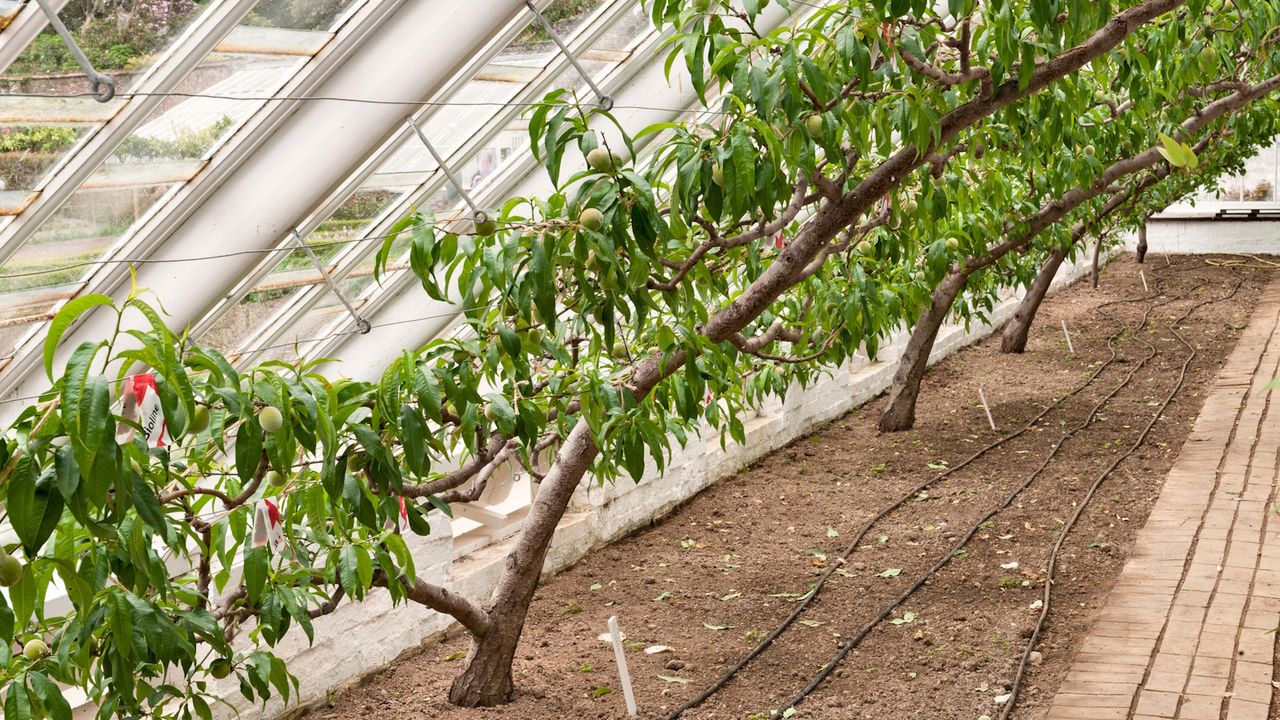URGENT UPDATE: Homegrown peaches are now a reality for those in cold and wet climates, thanks to a Victorian gardening technique that has stood the test of time. Just announced by experts at Gravetye Manor in England, this method ensures a bumper harvest while preventing common issues like leaf curl, pest problems, and frost damage.
During a recent visit to this historic estate, Head Gardener Tom Coward revealed how the use of a Victorian glasshouse allows peach trees to thrive despite challenging weather conditions. The innovative approach, first employed by renowned horticulturist William Robinson in 1884, continues to yield high-quality fruit every summer.
Coward emphasizes the importance of this technique for peach cultivation in regions prone to moisture-related diseases. “By putting them under glass, you don’t get peach leaf curl,” he stated. This fungal disease, which affects peach trees by distorting leaves and weakening the plants, becomes increasingly problematic in wet environments.
Gravetye Manor’s glasshouse, restored to its original glory in 2012, shelters four varieties of peach trees, including Amsden June and Red Haven. “The blossom never gets frosted, which can stop a peach tree from fruiting,” Coward added, highlighting the flavor benefits of growing peaches in this protected environment.
The Victorian glasshouse technique is especially crucial for those living in the US hardiness zones 6 to 8, where peach trees traditionally struggle due to similar climatic challenges. Growers are urged to consider compact peach varieties and ensure proper soil drainage to maximize their success.
As the summer harvest approaches, Coward shares key tips for aspiring peach growers. “If you have space for a sizeable greenhouse, you can grow compact peach trees and fruit trees in pots,” he advises. Proper ventilation and training techniques, such as oblique cordon or espalier, are essential for maintaining healthy trees and preventing fungal diseases.
Peach lovers are encouraged to look for signs of ripeness as the season progresses. Harvesting should begin when the fruit turns yellow and emits a sweet aroma. With the right conditions, those in colder climates can enjoy fresh peaches earlier than ever before.
This revelation not only transforms the gardening landscape for amateur horticulturists but also evokes excitement for peach enthusiasts. The enduring legacy of Victorian gardening continues to inspire and provide solutions for modern-day challenges. As this news spreads, communities are sure to embrace this time-tested technique, ensuring summer peach harvests for years to come.
Stay tuned for more updates as this story develops, and get ready to enjoy delicious, homegrown peaches!





































































